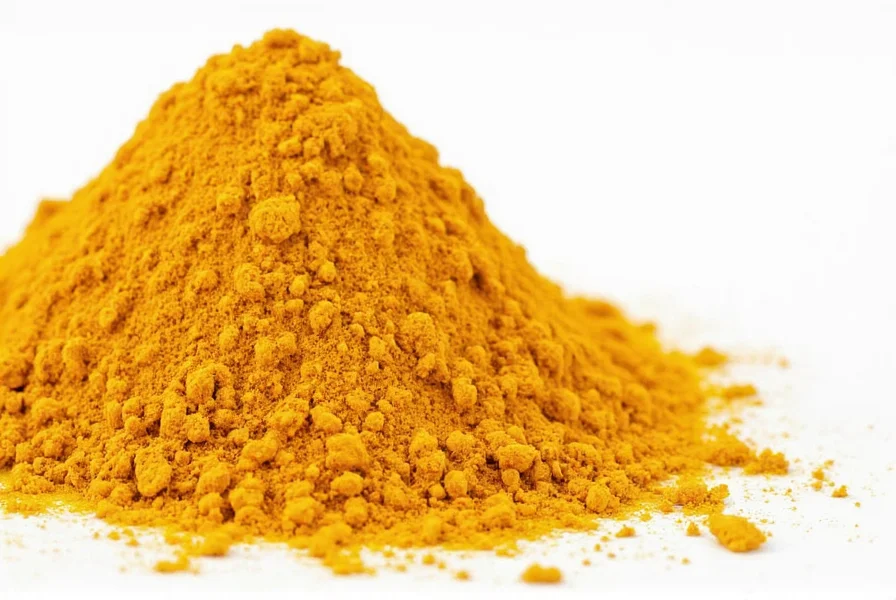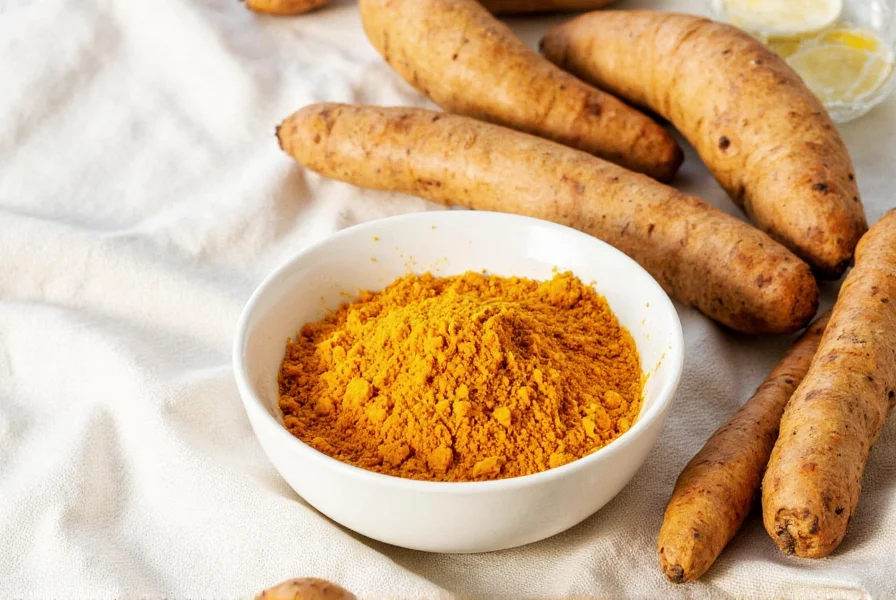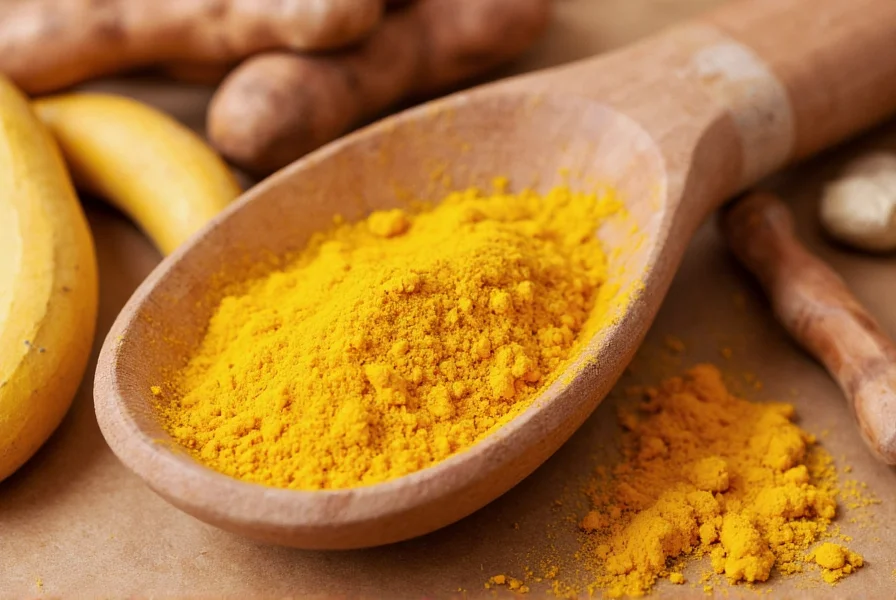Joint pain affects millions worldwide, driving many to explore natural alternatives alongside conventional treatments. Turmeric, the vibrant yellow spice central to curry, has gained significant attention for its potential joint health benefits. This comprehensive analysis examines what current research reveals about turmeric and joint pain relief, separating scientific evidence from popular claims.
The Science Behind Turmeric and Joint Health
Turmeric (Curcuma longa) contains curcuminoids, with curcumin being the most studied active compound. Curcumin works through multiple pathways that influence joint health:
- Inhibits inflammatory enzymes like COX-2 and 5-LOX
- Reduces production of inflammatory cytokines including TNF-α and IL-6
- Modulates NF-kB signaling, a key regulator of inflammation
- Exhibits antioxidant properties that protect joint tissues
Unlike nonsteroidal anti-inflammatory drugs (NSAIDs) that primarily target single pathways, curcumin's multi-target approach may explain its potential benefits for chronic joint conditions while potentially reducing side effects.
Evidence from Clinical Research
Multiple human studies have investigated turmeric's effectiveness for joint pain relief. A 2016 meta-analysis published in the Journal of Medicinal Food reviewed eight clinical trials involving 797 participants with osteoarthritis. Researchers found that curcumin supplementation significantly reduced pain scores and improved physical function compared to placebo.
One notable study compared 1,000mg daily of Meriva® (a curcumin-phospholipid complex) to 100mg of diclofenac sodium in 50 patients with knee osteoarthritis. After three months, both groups showed significant improvement, but the curcumin group experienced fewer gastrointestinal side effects.
| Study | Participants | Intervention | Duration | Key Findings |
|---|---|---|---|---|
| Kuptniratsaikul et al. (2014) | 367 with knee OA | Curcuma extract 1,500mg/day vs. ibuprofen 1,500mg/day | 4 weeks | Similar pain reduction, fewer GI issues with turmeric |
| Amalraj et al. (2017) | 60 with knee OA | NovaSol® curcumin 200mg/day vs. placebo | 12 weeks | Significant improvement in WOMAC scores with curcumin |
| Chandran & Goel (2012) | 45 with RA | Curcumin 500mg twice daily vs. placebo | 8 weeks | Superior reduction in joint swelling and tenderness |
Understanding Turmeric Bioavailability Challenges
One significant limitation of turmeric is its poor bioavailability. Standard turmeric powder contains only 2-8% curcumin, and even pure curcumin has limited absorption. This explains why traditional turmeric consumption may not yield therapeutic effects for joint pain.
Modern formulations address this through:
- Liposomal curcumin: Encapsulated in fat molecules for better absorption
- Curcumin with piperine: Black pepper extract increases absorption by up to 2,000%
- Phospholipid complexes: Such as Meriva® that enhance bioavailability
- Nanoparticle formulations: Like NovaSol® that improve solubility
When evaluating does turmeric help with knee pain specifically, research suggests these enhanced formulations are necessary to achieve clinically meaningful results.
Recommended Dosage and Usage Guidelines
Based on clinical evidence, effective turmeric dosage for joint inflammation typically ranges from 500-1,500mg of standardized curcumin extract daily. Important considerations include:
- Standardized extracts should contain 95% curcuminoids
- Divided doses (twice daily) may provide more consistent blood levels
- Minimum 8-12 weeks of consistent use needed to assess effectiveness
- Look for products with third-party testing for quality assurance
For those exploring the best turmeric supplement for arthritis, formulations combining curcumin with absorption enhancers generally show superior results in clinical trials compared to plain turmeric powder.

Potential Side Effects and Interactions
Turmeric is generally well-tolerated at recommended doses, but potential issues include:
- Mild gastrointestinal discomfort at high doses
- Increased risk of bleeding when combined with blood thinners
- Possible interactions with diabetes medications
- Contraindicated for people with gallbladder issues
Unlike NSAIDs, turmeric doesn't carry risks of stomach ulcers or kidney damage at standard doses, making it an appealing option for long-term management of chronic joint pain. However, individuals should consult healthcare providers before starting turmeric supplements, especially if taking medications or managing health conditions.
Managing Expectations: Turmeric vs. Conventional Treatments
Research consistently shows turmeric provides modest pain relief compared to placebo, but generally less than prescription medications. A 2020 review in Phytotherapy Research concluded that while curcumin demonstrates significant anti-inflammatory effects, it shouldn't replace conventional treatments for moderate to severe arthritis but may serve as a complementary approach.
Those wondering how long does turmeric take to work for joint pain should understand that results typically emerge after 4-8 weeks of consistent use, unlike NSAIDs which provide more immediate (but temporary) relief.
Practical Recommendations for Joint Pain Relief
Based on current evidence, here's how to effectively incorporate turmeric for joint health:
- Choose a standardized curcumin extract with enhanced bioavailability
- Start with 500mg twice daily and assess effects after 8 weeks
- Combine with black pepper (piperine) for better absorption
- Maintain consistent daily use—effects build over time
- Consider combining with other evidence-based approaches like exercise and weight management
- Track symptoms to objectively assess effectiveness
For those exploring natural remedies for joint inflammation, turmeric represents one of the better-researched options, but should be viewed as part of a comprehensive approach rather than a standalone solution.
Limitations of Current Research
While promising, turmeric research has limitations worth noting:
- Many studies have small sample sizes
- Long-term safety data beyond 6-12 months is limited
- Optimal dosing isn't fully established
- Quality varies significantly between products
- Most research focuses on knee osteoarthritis rather than other joints
Future research needs to address these gaps to provide clearer guidance on turmeric for joint pain management.
Conclusion: A Reasonable Option for Joint Pain Management
Turmeric, particularly in the form of enhanced curcumin supplements, shows promise as a complementary approach for managing joint pain. Current evidence supports its use for mild to moderate osteoarthritis symptoms, with a favorable safety profile compared to many pharmaceutical options. While not a miracle cure, it represents one of the better-supported natural options for those seeking alternatives or additions to conventional joint pain treatments. As with any supplement, realistic expectations and consultation with healthcare providers are essential for safe and effective use.

How long does it take for turmeric to reduce joint pain?
Most clinical studies show noticeable improvement in joint pain after 4-8 weeks of consistent daily use, with optimal results typically appearing around 8-12 weeks. Unlike NSAIDs which provide immediate but temporary relief, turmeric's effects build gradually as inflammation decreases.
What's the most effective turmeric dosage for arthritis?
Research suggests 500-1,500mg of standardized curcumin extract daily, divided into two doses. Enhanced formulations like those with piperine or phospholipids typically require lower doses (around 500mg twice daily) compared to plain curcumin, which may need higher amounts due to poor absorption.
Can turmeric replace my arthritis medication?
Turmeric should not replace prescribed arthritis medications without consulting your healthcare provider. Current evidence shows it provides modest pain relief compared to conventional treatments. Many healthcare providers recommend it as a complementary approach rather than a replacement, especially for moderate to severe arthritis.
Which type of turmeric supplement works best for joint pain?
Formulations designed to improve bioavailability work best for joint pain relief. Look for products containing curcumin with piperine (black pepper extract), phospholipid complexes (like Meriva®), or nanoparticle formulations (like NovaSol®). These enhanced versions provide significantly better absorption than standard turmeric powder or basic curcumin supplements.
Are there any side effects of using turmeric for joint pain?
Turmeric is generally well-tolerated at recommended doses. Some people may experience mild gastrointestinal discomfort. At high doses, it may interact with blood thinners and diabetes medications. Those with gallbladder issues should avoid turmeric supplements. Unlike NSAIDs, it doesn't typically cause stomach ulcers or kidney problems at standard doses.











 浙公网安备
33010002000092号
浙公网安备
33010002000092号 浙B2-20120091-4
浙B2-20120091-4